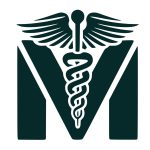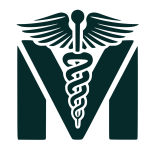Treatment
Esophageal Cancer
What is Esophageal Cancer?
Esophageal cancer develops in the esophagus, the muscular tube connecting the throat to the stomach. It’s often diagnosed at advanced stages due to subtle early symptoms, leading to a poor prognosis.
Types:
- Squamous Cell Carcinoma (SCC)
- ~30% of cases. Arises from squamous cells lining the upper/mid esophagus.
- Key risks: Smoking, alcohol, hot beverages, dietary nitrosamines (common in Asia/Africa).
- Adenocarcinoma (AC)
- ~60% in Western countries. Develops from glandular cells in the lower esophagus.
- Key risks: Chronic gastroesophageal reflux disease (GERD), Barrett’s esophagus, obesity.
- Rare Types: Small cell carcinoma, sarcoma, lymphoma.
Symptoms:
- Early: Often none or vague (heartburn, indigestion).
- Progressive:
- Dysphagia (trouble swallowing solids → liquids), odynophagia (painful swallowing).
- Weight loss (unintentional), chest pain, regurgitation.
- Advanced: Hoarseness (recurrent laryngeal nerve invasion), cough (tracheal fistula), vomiting blood.
🚨 Red Flag: Dysphagia warrants immediate endoscopy.
Risk Factors:
- SCC:
- Tobacco (any form), heavy alcohol, combined use ↑ risk 100×.
- Poor diet (low fruits/vegetables), hot beverages (>65°C), achalasia, caustic injury.
- AC:
- GERD/Barrett’s esophagus (main precursor), obesity, hiatal hernia, high-fat diet.
- Shared: Age (>50 yrs), male sex (3–4× ↑ risk), radiation exposure, family history.
Diagnosis:
- Endoscopy (+ Biopsy):
- Gold standard. Visualizes tumors and biopsies tissue.
- Imaging:
- Barium Swallow: Identifies strictures/ulcers.
- CT/PET-CT: Staging (lymph nodes, metastases).
- Endoscopic Ultrasound (EUS): Determines tumor depth (T-stage) and nodal involvement.
- Biomarkers: Limited role (e.g., HER2 for targeted therapy in AC).
Treatment:
Treatment depends heavily on stage, location, histology, and patient fitness.
- Early-Stage (Tis, T1a):
- Endoscopic Resection: For mucosal tumors (EMR/ESD).
- Ablation: Radiofrequency ablation (RFA) for Barrett’s dysplasia.
- Locally Advanced (Stages II–III):
- SCC:
- Chemoradiation (Definitive): Cisplatin + 5-FU + radiation (preferred for cervical/upper esophagus).
- Surgery: Esophagectomy (Ivor Lewis/McKeown) after neoadjuvant chemoradiation.
- AC:
- Neoadjuvant Chemo/Chemoradiation → Surgery (CROSS regimen: carboplatin/paclitaxel + RT).
- SCC:
- Metastatic (Stage IV):
- Immunotherapy: 1st-line for PD-L1+ tumors (pembrolizumab ± chemo).
- Targeted Therapy:
- *HER2+ AC:* Trastuzumab + chemo.
- VEGF Inhibitors: Ramucirumab (2nd-line).
- Palliative Care: Stents/laser for dysphagia, nutrition support, pain management.
Prognosis:
- Overall, 5-Year Survival: ~20% (improving with multimodal therapy).
- Favorable Factors:
- Early stage (T1), AC histology, response to neoadjuvant therapy, R0 resection.
- Poor Prognosis:
- SCC, weight loss >10%, nodal/distant spread, poor differentiation.
Prevention & Screening
- High-Risk Groups (Barrett’s):
- Regular surveillance endoscopy with biopsies.
- Lifestyle Modifications:
- Quit smoking, limit alcohol, weight loss, treat GERD.
- Diet: Avoid very hot drinks; increase fruits/vegetables.
Critical Considerations
- Nutritional Support: Essential pre/post-treatment (feeding tubes often needed).
- Surgical Complications: Anastomotic leaks, vocal cord paralysis, dumping syndrome.
- Clinical Trials: Investigating immunotherapy combinations, biomarkers, and minimally invasive surgery.
- Quality of Life: Dysphagia management is prioritized (stents, dilation).
Multidisciplinary care (GI, oncology, surgery, nutrition) is crucial. Consult a gastrointestinal oncologist for personalized plans.


